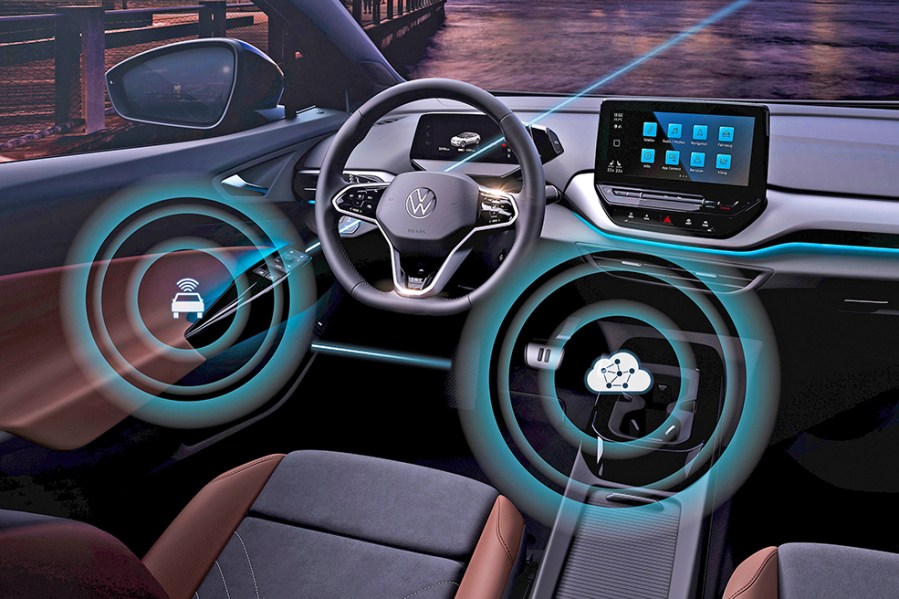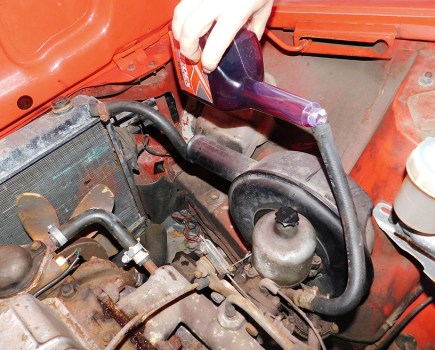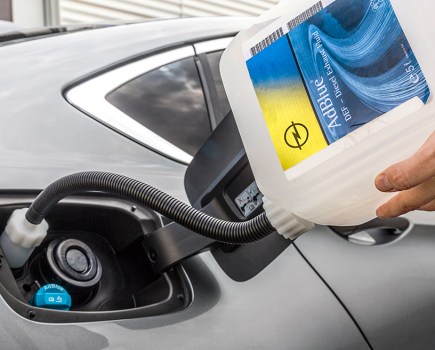Thanks to over-the-air updates, electrical glitch fixes or software updates can now happen away from a garage. Here’s how they work
Words: Chris Randall
If your car has needed a fix or update to its software, chances are this meant a trip to a garage or dealer to have it hooked up to their computer. But nothing stands still in the world of automotive technology, and thanks to the use of Over-The-Air (OTA) updates, such garage visits are going to become a thing of the past. Over-the-air updates mean data can be transmitted to the car and downloaded by its systems while it’s parked. Pull up on the driveway in the evening and by the time you’re ready to set off again in the morning, the relevant software will be have been fixed or improved without any inconvenience to the driver.
As cars become ever-more laden with tech, the ability to sort annoying glitches so quickly and easily is certainly a boon – but the scope for improvements to be made during ownership is equally enticing. The use of over-the-air updates means that providing the latest navigation mapping or enhancing connectivity features is a simple task – but there’s much greater scope beyond this too.
How do over-the-air updates work?
The car is connected to a manufacturer’s cloud-based servers via the mobile phone network, with the data often received by an embedded SIM. The data is encrypted for security, then it’s simply a case of the update being downloaded onto the car’s computers, a process that can take anything from a few minutes to a number of hours. Depending on the type of update, the owner will either be alerted through the infotainment display that it is waiting to be downloaded, or the update will happen automatically in the background.
The exact process can differ between manufacturers, but it can be possible to turn automatic updates on or off, or to set a convenient time for when larger, scheduled updates take place – perhaps overnight when the car won’t be in use. Additionally, it’s normally the case that certain criteria need to be met before a major download takes place, such as the doors being closed and locked and an EV’s battery being at a certain level of charge (often 40-50%).
Tesla was the first car maker to employ such a system, but plenty of others have now followed suit and it’s a method that will only grow in importance as the roll-out of electric vehicles continues to gather pace. Indeed, over-the-air updates have already been used to upgrade energy management systems on some models, which has resulted in improved range and shorter charging times.
And speaking of EVs, Volkswagen announced towards the end of 2021 that its ID. models will benefit from free software updates every three months or so. The first of these introduced various improvements, including to lighting functions, infotainment functionality and performance and stability systems. With data transferred to the ‘In Car Application Server’, VW says it’s possible to reach and update up to thirty-five control units via over-the-air updates, adding: “this means the ID. models remain constantly up-to-date after delivery, and customer cars retain their value better.”

Which cars use over-the-air updates?
A wide range of car makers already deliver updates in this way. BMW has been keen to utilise the technology for both internal-combustion and EV models; for example, 2021 saw the RingGo parking payment app added to the iDrive system (for cars built from July 2018 using the Operating System 7), as well as an update to around two million cars with the Spotify Podcast function; an improved Lane Departure Warning System was also added, and owners of M3 and M4 models benefitted from new sound modes.
Ford has already improved the electric Mach-E, with its ‘Power-Up’ system delivering an update that unlocked more battery capacity and increased range, as well as introducing the ‘Sketch’ function that allows occupants to draw on the touchscreen.
Volvo is another keen advocate, introducing updates for a range of ICE and PHEV models that use the Android-based infotainment system, along with its XC40 Recharge EV. In 2021 it said that “a new Volvo is no longer at its finest when it leaves the factory, but keeps improving over time as additional OTA updates are launched.”
The benefits of over-the-air updates are obvious,” said Henrik Green, Volvo chief technology officer. “Yesterday you still had to drive to the workshop in order to get the latest updates to your car. Today you simply click OK and your electric Volvo takes care of the rest. It couldn’t be easier.”
Volkswagen has already said that it sees in over-the-air updates “the potential to generate hundreds of millions in additional revenue over the next few years”; what it’s referring to is the capability to change the car’s specification during ownership. Features that are already installed but currently disabled can be unlocked and new ones added, so a current or future owner will be able to tailor their car much more closely to their preferred specification as and when they choose. VW points out that these could be functions that the customer only orders when needed, such as Travel Assist or improved battery performance for long journeys.
A further example is BMW’s ConnectedDrive Store, which offers owners the option of purchasing all manner of upgrades or improvements, all without having to go anywhere near a dealer. It depends on the model in question and the Operating System it uses, but just to give a flavour of what’s possible: an advanced Active Cruise Control system and Adaptive M Suspension with its comfort and sport settings are available on some models over-the-air. Incidentally, such downloads are linked to the vehicle’s VIN, so once purchased they become a permanent fixture.
It’s easy to see how improving your car with a quick download could prove enticing, but this also raises a question around potential difficulties when it comes to establishing the precise specification of the used car you’re interested in. As this is still a fairly new development its impact won’t necessarily be felt for a few years when it’s more widely available. And while it will be easy enough for a main dealer to interrogate a car’s systems to see if any updates have been made by a previous owner, it may well prove somewhat harder for anyone buying privately or from an independent dealer. Pinning down a car’s exact specification may just have become a bit more difficult.

Our verdict
While it’s not hard to identify such potential pitfalls, it would be remiss not to consider the benefits it can bring to ownership. To have a car that’s always as up to date as it can possibly be, with the very latest in safety and usability functions, can only be a good thing. It will be make it better and more enjoyable to use, not to mention more efficient, and if you can improve its specification over time, you might be tempted to hang on to your car for longer.
And being able to have all of this without the need to visit a garage is a sign of just how quickly the world of motoring is changing. Something as simple as an electronic download might be anathema to those that enjoy tinkering with cars – but as full electrification beckons, it’s something we’ll all need to embrace.






